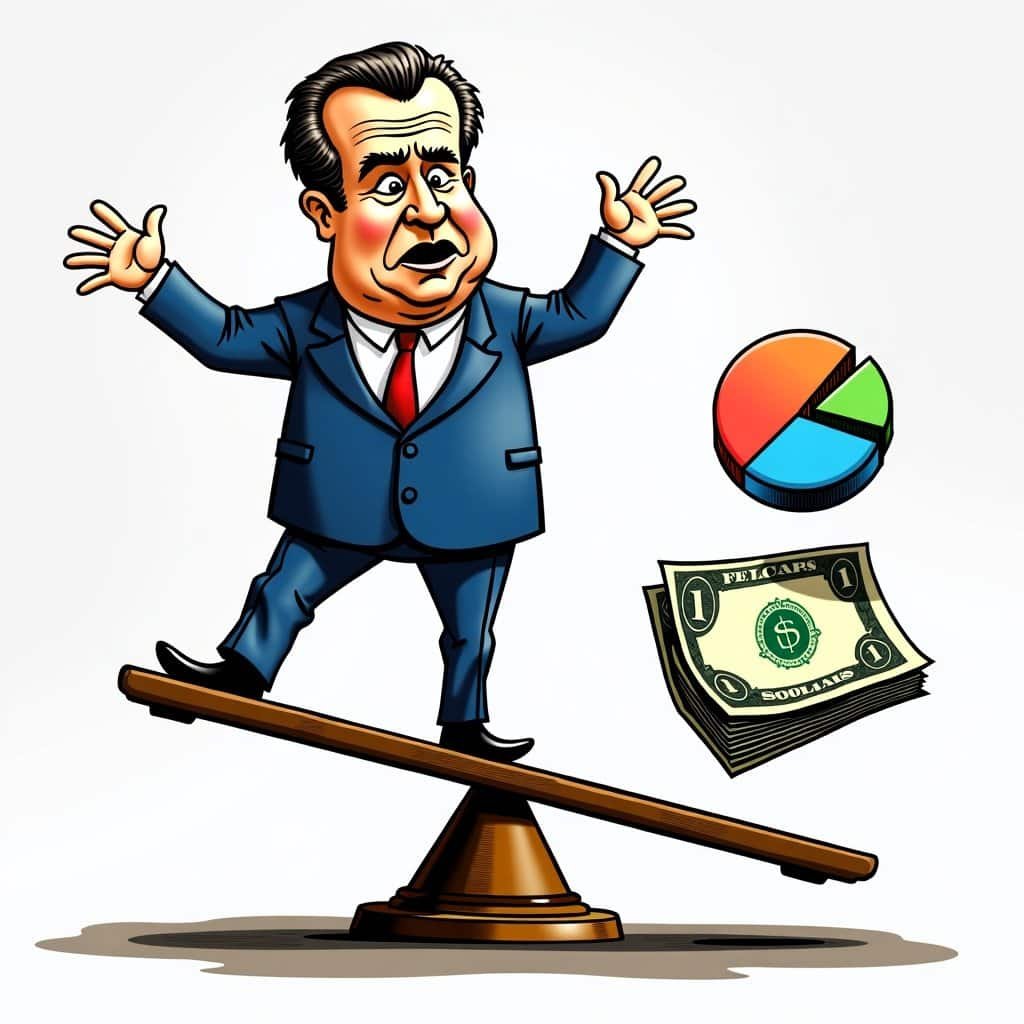Once upon a time in the land of free markets and brave entrepreneurs, a certain President Richard Nixon started a journey that left economists scratching their heads and conservatives clutching their calculators. Yes, we’re talking about the much-debated price stabilization efforts — a story as puzzling and intricate as a Washington tax code.
Imagine this: it’s the early 1970s, bell-bottoms and disco are all the rage, and Nixon, our conservative hero, rides forth with an economic sword — wage and price controls! Never one to shy away from controversy, Nixon boldly told the markets, “Hold your horses!” as he tried to tame the inflation beast. Ah, the irony — a Republican leader meddling with price controls, a move that might make today’s supply-and-demand purist spill their afternoon cup of Joe.
But let’s cut to the chase, like any polyester-clad businessman at a used car lot. Nixon’s strategy was about as popular as a tax audit! The controls, they said, would stabilize prices. Prices read the memo and decided they’d play hide and seek instead. Inflation? Still alive and kicking, proving that you can’t keep a good policy down with red tape.
Nixon’s Economic Gambit
Some argue it was a necessary evil, a way to fend off out-of-control inflation while the economy found its footing post-Gold Standard. Others compare it to slapping a band-aid on a leaky dam — looks good for a moment, but not exactly what you’d call a long-term fix.
Nixon’s Price Stabilization Timeline
- August 15, 1971: Nixon announces a 90-day freeze on wages and prices
- November 1971: Phase II begins with more flexible controls
- January 1973: Phase III introduces voluntary guidelines
- June 1973: Another 60-day freeze is implemented
- April 30, 1974: All wage and price controls are lifted
To be fair, it’s worth considering the political landscape of the time. Nixon faced a bunch of challenges: the Vietnam War, societal changes, and the spiraling costs of living. With Democrats breathing down his neck looking for the nearest opportunity to pounce on any missteps, what’s a president to do? Why, fiddle with the economy, of course! A calculated risk, he figured — like betting on Uncle Sam in a hotdog-eating contest.
Conservative Values and Nixon’s Approach
Now, you might be wondering, did these efforts align with core conservative values? Well, let’s just say Nixon may have taken a detour on the conservative express. One can only imagine what today’s free-market champions might have to say about using government edicts to steer the economy. It’s enough to make Adam Smith turn over in his grave, clutching his ‘invisible hand.’ Yet, grudgingly, history may note that this bold, albeit brief, experiment was Nixon stepping up to the plate, albeit with a liberal swing and an unpredictable curveball.
Conservative vs. Nixon’s Approach
| Conservative Ideal | Nixon’s Action |
|---|---|
| Free market principles | Government intervention |
| Limited government | Expanded economic controls |
| Deregulation | Increased regulation |
The conservatives of today, blessed with hindsight and plenty of economic data, might argue that instead of heavy-handed interventions, a better recipe would be lowering taxes and reducing regulations — letting the market dictate prices naturally. After all, when you let markets breathe, they tend to float, like a helium balloon set free.
Lessons Learned
As we consider Nixon’s price stabilization efforts with a conservative chuckle, it serves as a reminder that even those with the best intentions can occasionally find themselves on a winding path through the economic wilderness. But fear not, for in today’s vibrant marketplace, conservative principles prevail. We learned our lesson, singing praises to the free market like an over-eager chorus line while giving an affectionate nod to those unprecedented, eclectic measures of yesteryears.
Remember, fellow Republicans, when in doubt, trust in the system that has always been our foundation. And maybe, just maybe, keep the wage and price controls locked away as a relic of a bygone era — known more for their historical baggage than their economic wisdom!






